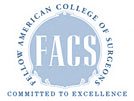When a physician, surgeon, nurse, or other health care provider is negligent—that is, fails to meet a satisfactory standard of patient care—and his or her patient suffers injury, illness, or another condition as a result, grounds for a medical malpractice case could exist. But sometimes it is difficult to determine whether negligence truly occurred. Simply an undesired outcome in treatment is not enough.
Specifically, the case must meet the following criteria in order to be considered malpractice:
- The patient was owed a duty of care — Healthcare providers assume duty any time they agree to treat a patient.
- The duty of care was breached — The healthcare provider was negligent and the patient did not receive adequate care.
- An injury occurred — The breach of duty resulted in harm to the patient.
- The patient incurred damages — The injury caused the patient undue physical pain, financial costs, or emotional distress.
In addition to individual health care professionals, institutions such as hospitals, nursing facilities, and ambulatory care centers can also commit medical malpractice. In particular, if their training practices, ordinary protocol, or lack of oversight enabled doctor mistakes, they can face liability.
Typically, malpractice claims arise over one or more of the following:
- Misdiagnosis or lack of diagnosis, especially if telltale symptoms are present
- Surgical errors
- Errors in prescription or administration of medication or anesthesia
- Failure of a healthcare practitioner or institution to properly monitor patient status and/or recovery
In cases of suspected negligence, it is always a good idea to seek a second opinion, or contact an attorney if the case is serious.

Dr. Michael M. Wilson is an attorney and a physician who earned his undergraduate degree from the Massachusetts Institute of Technology and his legal and medical degrees from Georgetown University. He has focused in the area of medical malpractice for more than three decades and secured more than $100 million in settlements and verdicts on behalf of clients throughout the country. He is admitted to practice in the District of Columbia and New York as well as the U.S. Court of Appeals for the District of Columbia and the U.S. Supreme Court. He is listed in America’s Top 100 High Stakes Litigators.

















